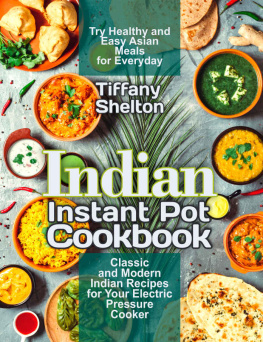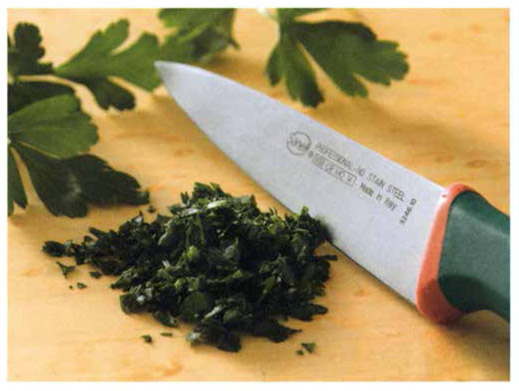GLOSSARY
Learn the language
Amchoor: Also known as dried mango powder; added to dishes to give a tart and tangy flavor.
Arhar Dal: Also known as toor; a commonly used yellow lentil.
Basmati: A long-grained Indian rice that is hugely popular. It is readily available in white or brown and imparts a fragrant aroma with light, fluffy texture when cooked.
Bay Leaf: Pungent dried leaves of the laurel plant, usually added in meat-based curries for a heady, woodsy flavor.
Beat: To manipulate food with a spoon, mixer, or whisk to combine.
Blanch: To briefly cook food, primarily vegetables or fruits, to remove skin or fix color.
Boil: To cook food close to heat source, quickly.
Brown: Cooking step that caramelizes food and adds color and flavor before cooking through.
Cardamom: A fragrant whole spice available in both a small green and large dark brown pod. The small green type is often used in curries or desserts for a delicate subtle flavor, whereas the larger brown type gives out a much more robust flavor and is often used in meat-based curries and pilafs.
Channa Dal: Yellow split pea lentils. This is also available in a green color.
Chill: To refrigerate a soup or place it in an ice-water bath to rapidly cool.
Chili Powder: Commonly known as cayenne; used widely in Indian cooking to impart heat and add a spicy flair.
Chop: To cut food into small pieces using a chefs knife or a food processor.
Cilantro: This fresh herb is from the leaf of a young coriander plant; crush before using or use as a garnish.
Cloves: A bud-like whole spice that imparts a robust aroma and strong spicy flavor to a dish.
Coat: To cover food in another ingredient, as to coat chicken breasts with bread crumbs.
Coriander: This spice seed is from a plant in the parsley family; the powdered variety is also a very common spice used in Indian cooking and imparts a subtle smoky flavor when added.
Cumin Seeds: Also known as jeera; a commonly used spice added to warm oil to impart a warm earthy flavor to any dish.
Curry Leaves: Commonly used in south Indian cooking; usually added to hot oil at the beginning of the cooking process to give a slightly aromatic flavor to the dish.
Dal: A common word used for lentils, both in the raw and cooked form.
Dice: To cut food into small, even portions, usually about square inches.
Dry Rub: Spices and herbs rubbed into meats or vegetables to marinate and add flavor.
Fenugreek Leaves: Also known as kasooori methi; is usually added towards the end of the cooking process to give the dish a new dimension of flavor.
Garam Masala: A blend of various spices that are dry roasted and then powdered, including bay leaves, cinnamon, cloves, green cardamom, cumin, and coriander seeds.
Gram Flour (Chickpea Flour): Also known as besan; commonly used as the base for making fritters or pakodas.
Grate: A grater or microplane is used to remove small pieces or shreds of skin or food.
Masala: The term commonly used ro describe a spice or collection of spices.
Masoor Dal: Split red lentils. These are widely available, commonly used and quick cooking.
Marinate: To let meats or vegetables stand in a mixture of an acid and oil to add flavor and tenderize.
Melt: To turn a solid into a liquid by the addition of heat.
Mint: A fresh herb used as garnish or blended in chutneys.
Mustard Seeds: Seeds of the mustard plant, commonly added to hot oil.
Nigella Seeds: Also known as kalonji; it releases a wonderful aroma when fried and imparts a robust touch of flavor to a dish.
Paneer: A fresh Indian cheese that can easily be made at home and cooked without melting into the dish.
Pan-Fry: To cook quickly in a shallow pan in a small amount of fat over relatively high heat.
Paratha: A lightly fried Indian flatbread made with whole-wheat flour and usually stuffed with potatoes and other vegetables.
Pickles: Fiery hot condiments made from a mix of fruits and vegetables; often eaten in minute quantities.
Roti: A flat Indian bread made from whole-wheat four and cooked on a griddle or nonstick pan.
Saffron: A fragrant sweet spice in the form of threads, which also happens to be the most expensive spice in the world.
Semolina: Also known as sooji; a grainy flour derived from durum wheat.
Shred: To use a grater, mandolin, or food processor to create small strips of food.
Simmer: A state of liquid cooking where the liquid is just below boiling.
Steam: To cook food by immersing it in steam. Food is set over boiling liquid.
Tamarind: Also known as imli; it is commonly used in a pulp form to add a tart, tangy flavor to dishes.
Tandoor: An Indian clay oven used to cook meat, vegetables and breads at high temperatures.
Toor Dal: A dull yellow-colored lentil that is most often used as the base for many south Indian specialities like sambhar.
Toss: To combine food using two spoons or a spoon and a fork until mixed.
Turmeric: Also known as haldi; a bright yellow spice powder used in small quantities to add a rich yellow color to curries and other dishes.
Whisk: Both a tool, which is made of loops of steel, and a method, which combines food until smooth.
Yogurt: A milk product used in most curries to thicken and give it a rich, creamy texture.
Zest: The colored part of the skin of citrus fruit used to add flavor to food.
INDIAN COOKING






















